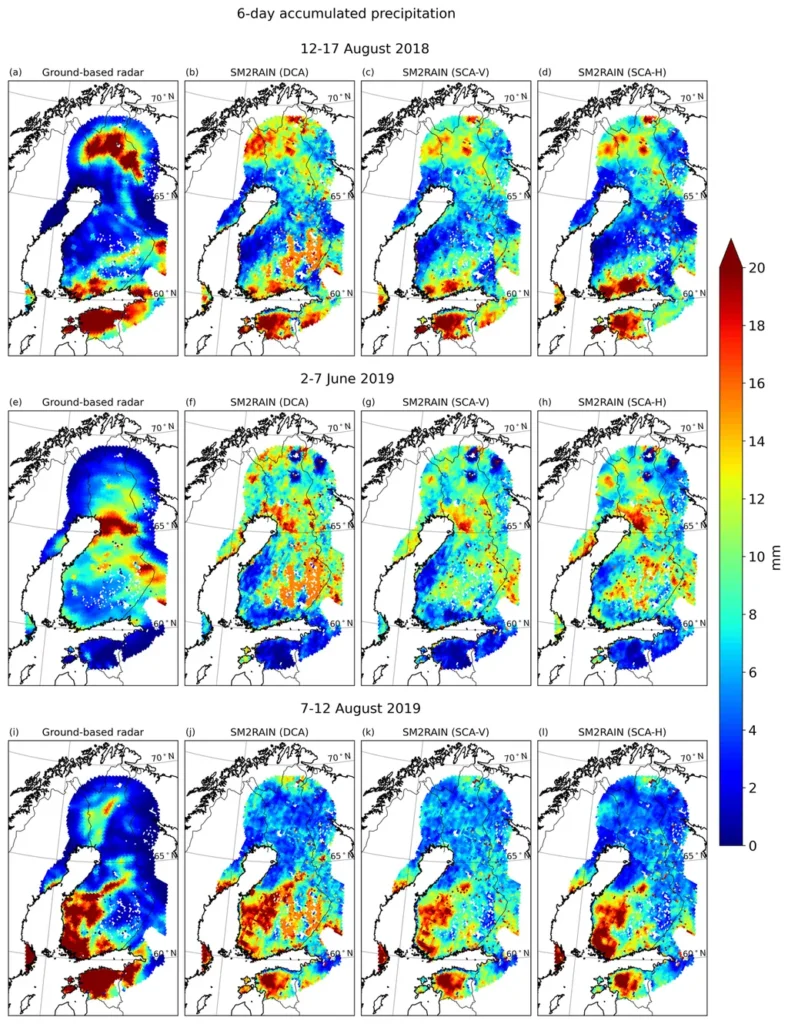In the vast, verdant expanses of the northern boreal forests, a silent, unseen factor plays a pivotal role in the ecosystem’s health and productivity: soil moisture. Accurately mapping this crucial variable has long been a challenge, but a recent breakthrough by researchers at the Finnish Meteorological Institute could revolutionize our understanding and management of these forests, with significant implications for the energy sector.
Dr. Eija Jääskeläinen, the lead author of the study published in the journal ‘Hydrology and Earth System Sciences’ (or ‘Hydrology and Earth System Sciences’ in English), and her team have developed a machine-learning-based model that estimates soil moisture at an unprecedented spatial resolution. The model uses data from NASA’s Soil Moisture Active Passive (SMAP) mission, along with vegetation properties, weather-related parameters, and in situ soil moisture measurements to achieve this feat.
“The challenge has always been balancing spatial and temporal resolution,” Jääskeläinen explains. “Satellite data provides excellent temporal resolution, but often at the cost of spatial detail. Our model retains the high temporal resolution of SMAP data while significantly improving spatial resolution.”
The implications for the energy sector are substantial. Boreal forests play a crucial role in carbon sequestration, acting as vast carbon sinks. Accurate soil moisture mapping can enhance our ability to predict tree growth and forest fire risk, both of which directly impact the carbon storage capacity of these ecosystems. “Understanding soil moisture dynamics is key to managing these forests for carbon storage,” Jääskeläinen notes. “This can inform policies and practices aimed at enhancing the role of boreal forests in mitigating climate change.”
Moreover, improved soil moisture mapping can aid in the sustainable management of forest resources, benefiting the timber industry and other forest-based sectors. It can also enhance our ability to predict and manage forest fires, which have significant economic and environmental impacts.
The model’s success is evident in its performance metrics. The root mean square error (RMSE) decreased from 0.103 to 0.092 m³/m³, and the correlation with in situ measurements increased from 0.46 to 0.55 over forest sites. These improvements highlight the model’s potential for practical applications.
As we look to the future, this research could pave the way for more sophisticated models that incorporate additional variables and improve predictive capabilities. It could also facilitate the integration of soil moisture data into larger Earth system models, enhancing our understanding of the complex interactions between the atmosphere, biosphere, and hydrosphere.
In the words of Jääskeläinen, “This is just the beginning. The potential for machine learning in environmental science is vast, and we’re only starting to scratch the surface.” As we grapple with the challenges of climate change and sustainable resource management, such innovations offer hope and promise for a more informed and effective approach to environmental stewardship.

